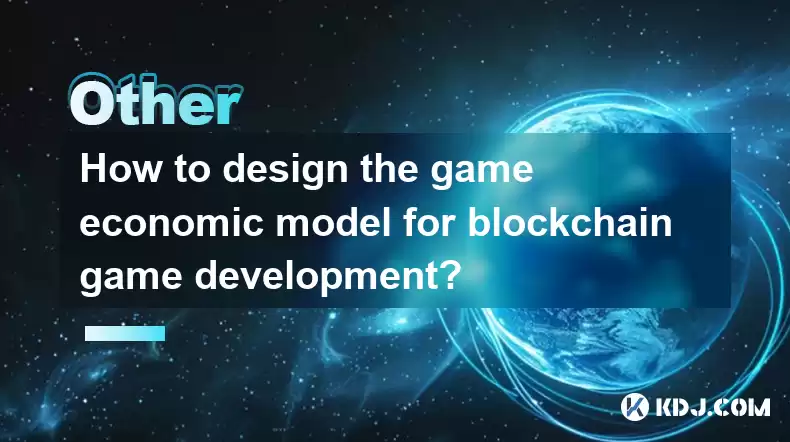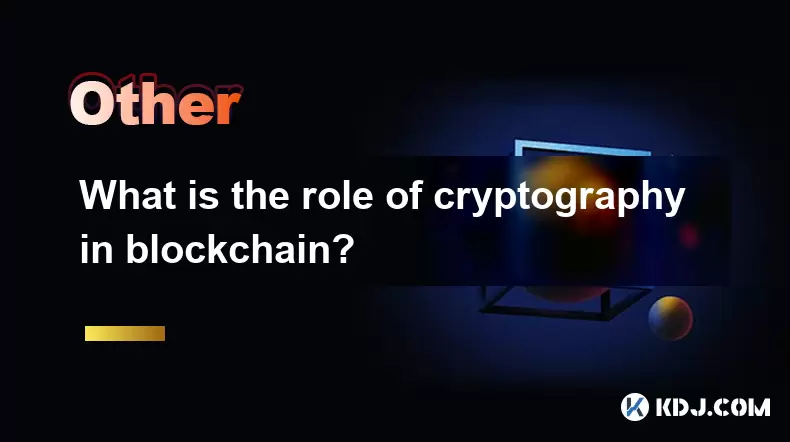-
 Bitcoin
Bitcoin $113900
0.47% -
 Ethereum
Ethereum $3491
-0.42% -
 XRP
XRP $2.876
-1.87% -
 Tether USDt
Tether USDt $1.000
0.03% -
 BNB
BNB $750.4
-0.49% -
 Solana
Solana $161.3
-1.76% -
 USDC
USDC $0.9999
0.01% -
 TRON
TRON $0.3242
-0.91% -
 Dogecoin
Dogecoin $0.1985
-0.19% -
 Cardano
Cardano $0.7241
1.49% -
 Hyperliquid
Hyperliquid $38.05
0.56% -
 Stellar
Stellar $0.3896
2.92% -
 Sui
Sui $3.442
0.61% -
 Chainlink
Chainlink $16.18
0.92% -
 Bitcoin Cash
Bitcoin Cash $541.0
0.51% -
 Hedera
Hedera $0.2427
2.67% -
 Ethena USDe
Ethena USDe $1.001
0.03% -
 Avalanche
Avalanche $21.39
-0.68% -
 Toncoin
Toncoin $3.669
2.25% -
 Litecoin
Litecoin $109.5
0.95% -
 UNUS SED LEO
UNUS SED LEO $8.966
0.11% -
 Shiba Inu
Shiba Inu $0.00001218
0.77% -
 Polkadot
Polkadot $3.598
1.23% -
 Uniswap
Uniswap $9.164
1.14% -
 Monero
Monero $297.7
1.21% -
 Dai
Dai $1.000
0.00% -
 Bitget Token
Bitget Token $4.328
0.84% -
 Pepe
Pepe $0.00001047
1.05% -
 Cronos
Cronos $0.1329
0.70% -
 Aave
Aave $257.6
1.03%
How to design the game economic model for blockchain game development?
A well-designed economic model in blockchain games enhances player engagement and ensures ecosystem balance, involving in-game currencies, NFTs, and robust trading systems.
Apr 14, 2025 at 04:07 am

Designing the game economic model for blockchain game development is a critical aspect that can determine the success or failure of a game. A well-designed economic model not only enhances player engagement but also ensures the sustainability and balance of the game's ecosystem. In this article, we will explore the key components and steps involved in creating an effective economic model for blockchain games.
Understanding the Basics of Blockchain Game Economics
Before diving into the design process, it's essential to understand the fundamentals of blockchain game economics. Blockchain games operate on decentralized networks, which means that the game's assets, transactions, and economic activities are recorded on a blockchain. This introduces unique challenges and opportunities compared to traditional games. The primary goal of a blockchain game's economic model is to create a balanced system where players can earn, spend, and trade in-game assets while maintaining the game's overall health and player engagement.
Identifying Key Economic Components
The first step in designing a game economic model is to identify the key components that will drive the game's economy. These components typically include:
- In-game currencies: These can be native tokens or cryptocurrencies that players use for transactions within the game.
- Assets and NFTs: Non-fungible tokens (NFTs) represent unique in-game items that players can own, trade, or sell.
- Earning mechanisms: Ways for players to earn in-game currencies or assets, such as through gameplay, quests, or staking.
- Spending mechanisms: How players can spend their in-game currencies, such as purchasing items, upgrades, or services.
- Trading systems: Platforms or mechanisms that allow players to trade assets and currencies with each other.
Designing the In-Game Currency System
The in-game currency system is the backbone of the game's economy. When designing this system, consider the following aspects:
- Tokenomics: Define the total supply, distribution, and utility of the in-game currency. Decide whether the currency will be inflationary, deflationary, or have a fixed supply.
- Earning and spending: Create clear pathways for players to earn and spend the currency. Ensure that the earning mechanisms are balanced with the spending opportunities to prevent inflation or deflation.
- Interoperability: Consider whether the in-game currency can be used across different games or platforms, enhancing its utility and value.
Implementing Asset and NFT Systems
Assets and NFTs are crucial for player engagement and retention. Here's how to design an effective asset and NFT system:
- Rarity and value: Assign different levels of rarity to assets and NFTs to create a sense of value and exclusivity. Rarer items should be harder to obtain and more valuable.
- Utility and functionality: Ensure that assets and NFTs have practical uses within the game. They could provide gameplay advantages, aesthetic enhancements, or access to exclusive content.
- Market dynamics: Design a marketplace where players can buy, sell, and trade assets and NFTs. Consider implementing fees, royalties, or other mechanisms to sustain the economy.
Creating Earning and Spending Mechanisms
Earning and spending mechanisms are essential for keeping players engaged and active within the game. Here are some strategies to consider:
- Play-to-earn: Implement systems where players can earn in-game currencies or assets by participating in gameplay activities. This could include completing quests, winning battles, or achieving milestones.
- Staking and yield farming: Allow players to stake their in-game currencies or assets to earn rewards over time. This can encourage long-term engagement and investment in the game.
- In-game purchases: Offer a variety of items, upgrades, or services that players can purchase using in-game currencies. Ensure that these purchases provide meaningful benefits to the player.
Balancing the Economy
Balancing the game's economy is crucial to prevent issues such as inflation, deflation, or player burnout. Here are some strategies to achieve balance:
- Supply and demand: Monitor the supply and demand of in-game currencies and assets. Adjust earning and spending mechanisms as needed to maintain equilibrium.
- Player feedback: Regularly gather feedback from players to understand their experiences and concerns. Use this feedback to make informed adjustments to the economic model.
- Economic simulations: Use economic simulations and modeling tools to predict the impact of changes to the game's economy. This can help identify potential issues before they arise.
Implementing Trading Systems
A robust trading system is essential for a thriving blockchain game economy. Here's how to design an effective trading system:
- Decentralized marketplaces: Implement decentralized marketplaces where players can trade assets and currencies directly with each other. This enhances the game's decentralization and player autonomy.
- Liquidity pools: Consider using liquidity pools to facilitate trading and provide liquidity for in-game assets. This can help stabilize prices and improve the trading experience.
- Fees and incentives: Design a fee structure that encourages trading while generating revenue for the game. Consider offering incentives for liquidity providers or frequent traders.
Ensuring Security and Fairness
Security and fairness are paramount in blockchain game development. Here are some measures to ensure a secure and fair economic model:
- Smart contract audits: Regularly audit smart contracts to identify and fix vulnerabilities. This helps prevent exploits and ensures the integrity of the game's economy.
- Anti-cheat mechanisms: Implement anti-cheat mechanisms to prevent players from exploiting the game's economy. This could include monitoring for suspicious activity or implementing proof-of-work systems.
- Transparency: Maintain transparency in the game's economic operations. Provide players with clear information about how the economy works and how their actions impact it.
Frequently Asked Questions
Q: How can I ensure that my blockchain game's economy remains balanced over time?
A: To maintain balance, continuously monitor the game's economy using economic simulations and player feedback. Adjust earning and spending mechanisms as needed to prevent inflation or deflation. Regularly review and update the economic model to adapt to changing player behaviors and market conditions.
Q: What are some common pitfalls to avoid when designing a blockchain game's economic model?
A: Common pitfalls include creating an economy that is too inflationary or deflationary, failing to provide enough earning opportunities, and neglecting to implement robust anti-cheat mechanisms. It's also important to avoid overly complex economic systems that may confuse players.
Q: How can I encourage player engagement through the game's economic model?
A: Encourage engagement by offering diverse earning and spending opportunities, such as play-to-earn mechanics, staking, and in-game purchases. Ensure that assets and NFTs have meaningful utility and value, and provide a user-friendly trading system to facilitate player interactions.
Q: What role does community feedback play in refining the game's economic model?
A: Community feedback is crucial for refining the game's economic model. Players can provide insights into what works and what doesn't, helping developers identify areas for improvement. Regularly engaging with the community and incorporating their feedback can lead to a more balanced and engaging economic model.
Disclaimer:info@kdj.com
The information provided is not trading advice. kdj.com does not assume any responsibility for any investments made based on the information provided in this article. Cryptocurrencies are highly volatile and it is highly recommended that you invest with caution after thorough research!
If you believe that the content used on this website infringes your copyright, please contact us immediately (info@kdj.com) and we will delete it promptly.
- Altcoins Most Searched: Hedera (HBAR) and the ETF Hype
- 2025-08-03 20:50:16
- Arbitrage Adventures: Creditcoin, Kaspa, and Chasing Crypto Profits
- 2025-08-03 20:30:16
- Claude HIVE & Code Agents: Faster Coding Revolution?
- 2025-08-03 20:50:16
- Trump Media, Bitcoin, and Crypto: A Surprising Alliance in the Making?
- 2025-08-03 21:30:16
- Shiba Inu's Bullish Reversal Hopes Amid Market Uncertainty: A Deep Dive
- 2025-08-03 21:30:16
- Shiba Inu's Struggle, Mutuum Finance's Rise, and Key Support Levels: A Crypto Deep Dive
- 2025-08-03 20:55:16
Related knowledge

What is the difference between on-chain and off-chain transactions?
Aug 02,2025 at 04:22pm
Understanding On-Chain TransactionsOn-chain transactions refer to digital asset transfers that are recorded directly on a blockchain ledger. These tra...

What is a node's role in a blockchain network?
Aug 03,2025 at 03:16pm
Understanding the Function of a Node in a Blockchain NetworkA node is a fundamental component of any blockchain network, acting as a participant that ...

What is the double-spending problem and how does blockchain prevent it?
Aug 02,2025 at 01:07pm
Understanding the Double-Spending ProblemThe double-spending problem is a fundamental challenge in digital currency systems where the same digital tok...

What is the difference between a blockchain and a database?
Aug 01,2025 at 09:36pm
Understanding the Core Structure of a BlockchainA blockchain is a decentralized digital ledger that records data in a series of immutable blocks linke...

How does blockchain handle scalability?
Aug 02,2025 at 02:58pm
Understanding Blockchain Scalability ChallengesBlockchain scalability refers to a network's ability to handle an increasing volume of transactions wit...

What is the role of cryptography in blockchain?
Aug 03,2025 at 03:42pm
Understanding the Foundation of Blockchain SecurityCryptography is the cornerstone of blockchain technology, providing the essential tools to ensure d...

What is the difference between on-chain and off-chain transactions?
Aug 02,2025 at 04:22pm
Understanding On-Chain TransactionsOn-chain transactions refer to digital asset transfers that are recorded directly on a blockchain ledger. These tra...

What is a node's role in a blockchain network?
Aug 03,2025 at 03:16pm
Understanding the Function of a Node in a Blockchain NetworkA node is a fundamental component of any blockchain network, acting as a participant that ...

What is the double-spending problem and how does blockchain prevent it?
Aug 02,2025 at 01:07pm
Understanding the Double-Spending ProblemThe double-spending problem is a fundamental challenge in digital currency systems where the same digital tok...

What is the difference between a blockchain and a database?
Aug 01,2025 at 09:36pm
Understanding the Core Structure of a BlockchainA blockchain is a decentralized digital ledger that records data in a series of immutable blocks linke...

How does blockchain handle scalability?
Aug 02,2025 at 02:58pm
Understanding Blockchain Scalability ChallengesBlockchain scalability refers to a network's ability to handle an increasing volume of transactions wit...

What is the role of cryptography in blockchain?
Aug 03,2025 at 03:42pm
Understanding the Foundation of Blockchain SecurityCryptography is the cornerstone of blockchain technology, providing the essential tools to ensure d...
See all articles

























































































